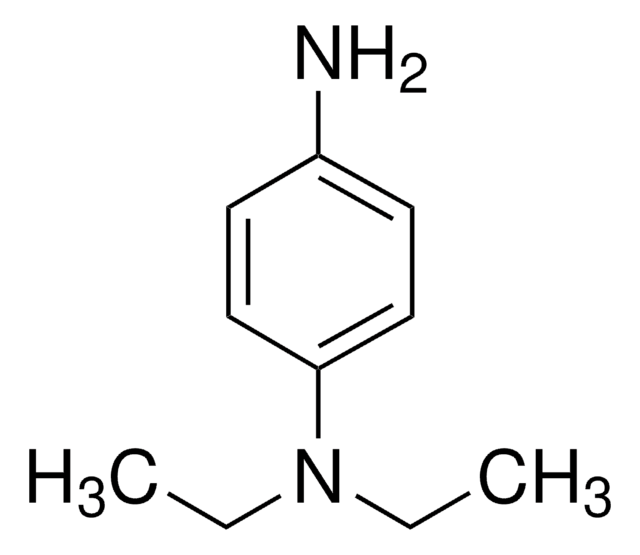1.00599
Chlorine Test, photometric
photometric, 0.010-6.00 mg/L (Cl2), Spectroquant®
About This Item
Recommended Products
Product Name
Chlorine Test, photometric, 0.010-6.00 mg/L (Cl2), Spectroquant®
product line
Spectroquant®
Quality Level
usage
sufficient for 200 tests ((free chlorine) or 100 (free chlorine) + 100 (total chlorine))
specific analyte(s)
chlorine
measuring range
0.010-6.00 mg/L (Cl2)
technique(s)
photometry: suitable
compatibility
for use with Spectroquant® Move 100
for use with Spectroquant® Move DC
for use with Spectroquant® Nova 60 A
for use with Spectroquant® Prove 100 (plus)
for use with Spectroquant® Prove 300 (plus)
for use with Spectroquant® Prove 600 (plus)
detection method
photometric (DPD)
storage temp.
15-25°C
General description
This Spectroquant® Chlorine test allows the accurate quantification. Chlorinated disinfectants are still in common use all over the world, their major applications being in the chlorination of drinking water and swimming pools. In weakly acidic solution free chlorine reacts with dipropyl-p-phenylenediamine (DPD) to form a red-violet dye that is determined photometrically. In the presence of potassium iodide, also combined chlorine is measured in this reaction.
The method is analogous to EPA 330.5, APHA 4500-Cl2 G, and DIN EN ISO 7393-2.
All our Cell and Reagent Test Kits are equipped with the unique Live ID (2D barcode) which allows seamless method recognition and contains essential information such as lot number, expiry date, and automatic calibration updates.
The Spectroquant® Reagent Test Kits contain highly stable, ready-to-use reagent mixtures to perform the analysis according to the procedure described in the accompanying instruction leaflet.
Legal Information
signalword
Danger
hcodes
Hazard Classifications
Eye Irrit. 2 - Repr. 1B - STOT RE 2 Oral
target_organs
Thyroid
Storage Class
6.1D - Non-combustible, acute toxic Cat.3 / toxic hazardous materials or hazardous materials causing chronic effects
wgk_germany
WGK 2
flash_point_f
Not applicable
flash_point_c
Not applicable
Certificates of Analysis (COA)
Search for Certificates of Analysis (COA) by entering the products Lot/Batch Number. Lot and Batch Numbers can be found on a product’s label following the words ‘Lot’ or ‘Batch’.
Already Own This Product?
Find documentation for the products that you have recently purchased in the Document Library.
Customers Also Viewed
Protocols
Preparation of a standard solution for total chlorine.
AQA Standard for free chlorine - Preparation of a standard solution for free chlorine
Preparation of a standard solution for free Chlorine according to DIN EN ISO 7393
Related Content
Disinfection control solutions ensure food safety and regulatory compliance in food & beverage manufacturing.
Our team of scientists has experience in all areas of research including Life Science, Material Science, Chemical Synthesis, Chromatography, Analytical and many others.
Contact Technical Service











